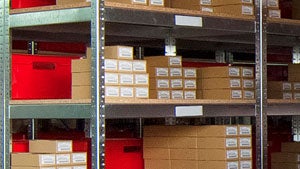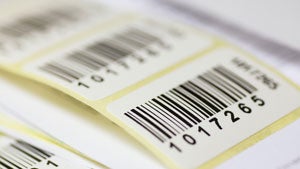Selecting the Right Barcode Label
Barcode labels come in a multitude of sizes, materials, and adhesives. You can select labels and tags for direct thermal printing or thermal transfer printing. You can also choose long-lasting labels that withstand extreme temperatures and harsh conditions or those for short-term use, such as shipping labels. With all these choices, it’s no wonder that companies need help selecting a labeling solution that meets their specific needs. That’s why we have label experts on staff. They live, eat, and breathe labels so you don’t waste time and money on products that aren’t a perfect fit.
So, what are some of the features to look for in a label?
- Application – Barcode labels take many forms, including labels, tags, receipts, tickets, and wristbands. Usually the application dictates the form. For example, are you tagging assets, labeling inventory, shipping products, manufacturing components, conducting point-of-sale (POS) transactions, tagging consumer goods, filling prescriptions, or caring for patients?
- Print technology – Direct thermal labels work best for items with short life spans, such as tickets, wristbands, and shipping labels. And because they are sensitive to light and heat, direct thermal labels are primarily used indoors. Thermal transfer labels are more durable and resistant to most chemicals and solvents, which is why they are found on items with a longer shelf life, including those that are stored or used outdoors.
- Material – There are two primary categories of label materials: paper and synthetics. Paper is primarily used for direct thermal labels, while synthetics such as polyester and polypropylene are used for thermal transfer. There are several options for label finishes, including uncoated, coated, high-gloss, and matte.
- Adhesive – A wide array of adhesives are available to handle a multitude of applications. The types of adhesives include acrylic, rubber, high-performance, high temperature, cold temperature, all temperature, removable, ultra-removable, multi-removable, high-tack acrylic, and high-tack rubber.
- Compliance – Certain labels meet strict requirements for certifications such as UL/cUL, CSA, UID, and IMDS.
- Durability – Label manufacturers test labels for strength; temperature tolerance; resistance to abrasion, liquids, chemicals, and tears; adhesives; and use (indoors or out).
- Size – Barcode labels come in small and large formats to identify and track everything from jewelry to chemical drums. You can also order custom labels to accommodate unique sizes.
- Other – Additional options include lamination, perforations, face and back slits, and color.
Wasp offers three main categories of labels: stock, custom, and pre-printed.
- Stock labels come in the most commonly used sizes, materials, and adhesives and are designed to work with various printer brands and models. Two of the biggest benefits to stock labels are cost and accessibility. Because they are in stock and don’t require any customization, you can usually get them at a reasonable price and receive them overnight.
- Custom labels have the perception of being pricey. And, they can be. But did you know that you can actually save money using custom labels? Nobody wants a label that doesn’t stick, fit, or last. With custom labels, you get a product that meets your exact requirements—regardless how unique. Even better, you can reduce expenses when you order custom labels in large quantities.
- Pre-printed labels – Personalization is possible with pre-printed labels that you can then run through your in-house barcode printer to add variable information like barcodes. Common elements found on pre-printed labels include company contact information, company logo, warnings, and color.
Wasp labels don’t just work with Wasp printers. Wasp labels work with practically every major name brand barcode printer.







